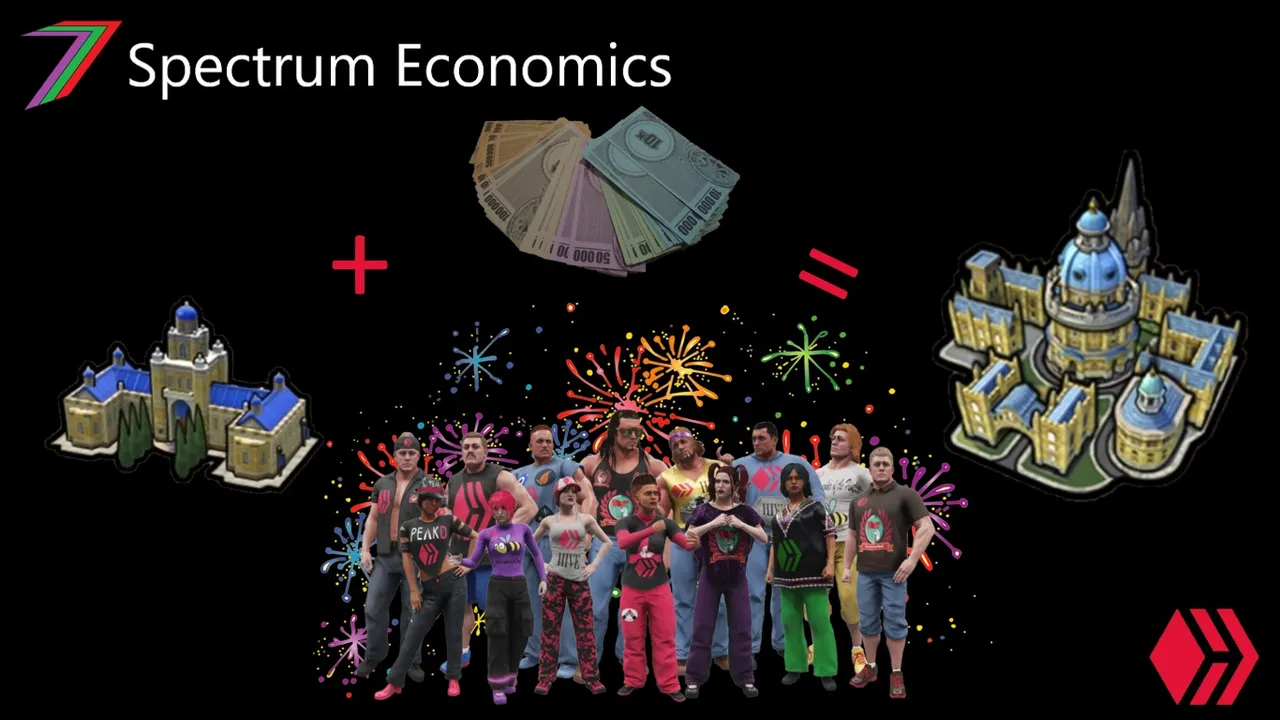Hi Everyone,
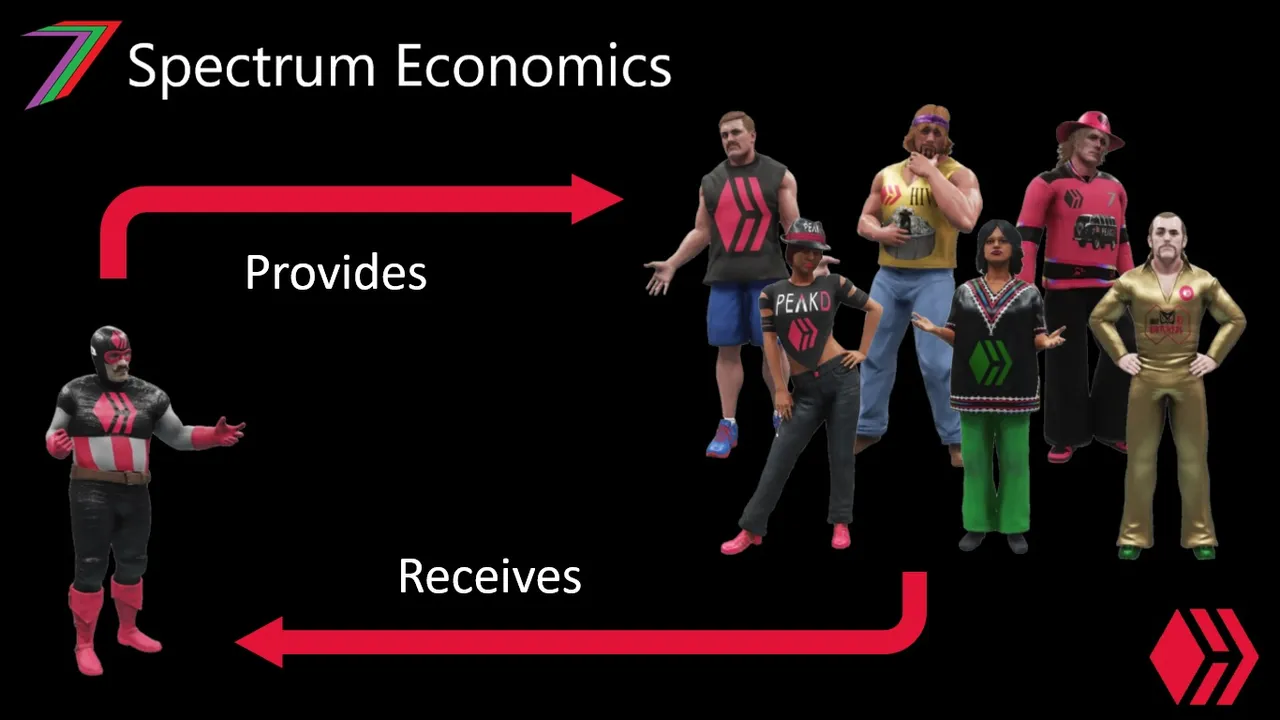
We (economists in particular), typically, view people as producers and consumers of goods and services. People have jobs that contribute to the production of goods and services. For doing so, they earn an income. They use this income to purchase and consume a variety of goods and services. A person is fulfilling someone else’s needs and wants in order to fulfil his or her own needs and wants. Fulfilling our needs and wants can also be considered as obtaining utility (Utility is a term in economics that refers to the total satisfaction received from consuming a good or service (Investopedia)). Therefore, we could argue that a person provides utility to obtain utility.
An imbalance between what is given and what is received
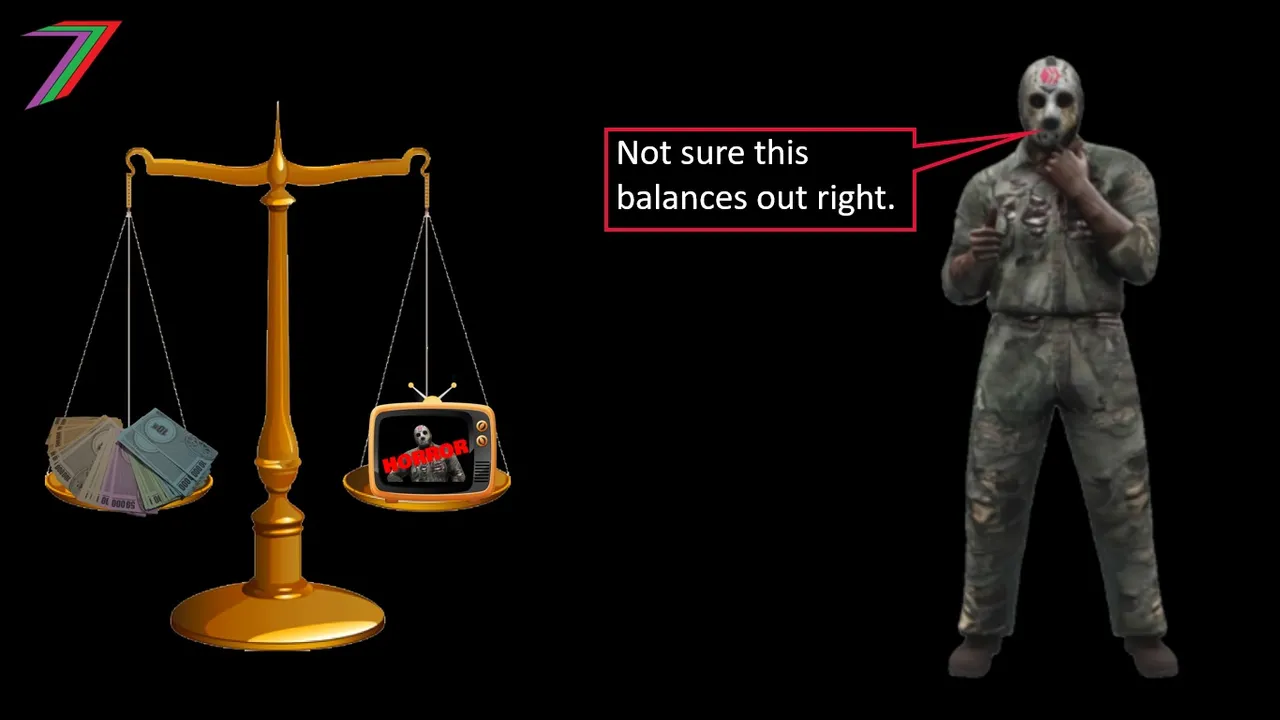
We could argue that, ideally, a person should consume approximately the same value of utility as he or she produces. However, this idea is problematic for a few reasons.
Utility consumption and production diminish at different rates. Utility consumption diminishes quickly after basic needs and wants have been met. This is because we have limited ability and time to enjoy beyond a particular point. However, utility production does not need to diminish as quickly because many people can obtain utility from what we produce. Figure 1 contains a possible example of a comparison of utility consumed with utility produced.
Figure 1: Individual Consumption vs Production Utility
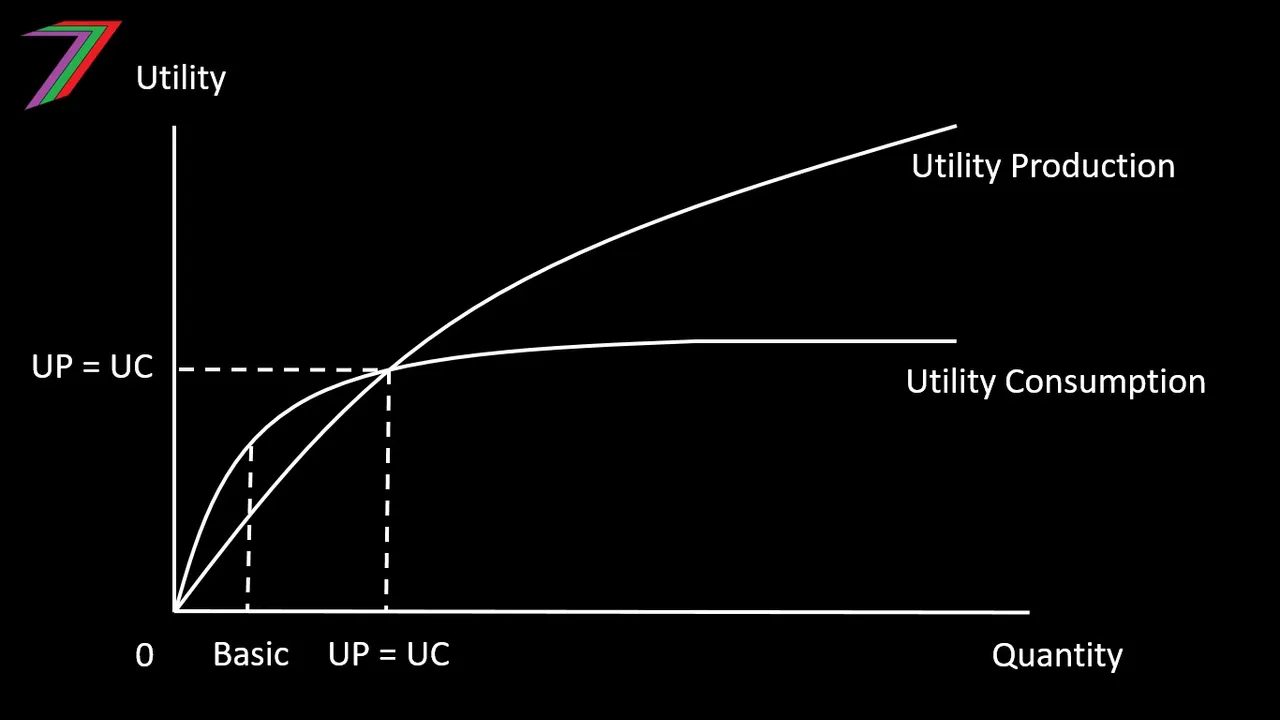
Note: A person's ability to provide utility to other people depends on the nature of the good or service being produced. For example, a song could provide utility to millions of people over many years even if was only sung once. Whereas a massage would only provide utility to one person.
Some people produce more utility than they could possibly consume. While other people are unable to produce sufficient utility to match the utility required for them to have a reasonable quality of life. Therefore, some people will receive less utility than they produce while others will receive more.
Utility produced cannot be directly converted into utility consumed. The income a person receives may not equate to the income required to obtain the same level of utility he or she produces. This could be because a person is under or over rewarded for the utility they produce or because of how a person assigns utility to different activities. Some people gain considerable utility from activities that require very few resources (i.e. low-income requirement). While other people obtain utility mostly from activities that require considerably more resources.
Utility is rewarded based on what someone is willing to pay for it to be produced. This could be a simple producer-customer relationship. For example, a person paying someone else to sing a song. In most cases, it is a complicated exchange. A person usually only provides part of the utility for a final product. The payment (i.e. revenue) for the product is divided amongst the factors of production that produced it. The mechanisms involved in the distribution of revenue do not necessarily result in an accurate distribution to each factor of production based on their contribution to the final product.
Providing utility with factors of production
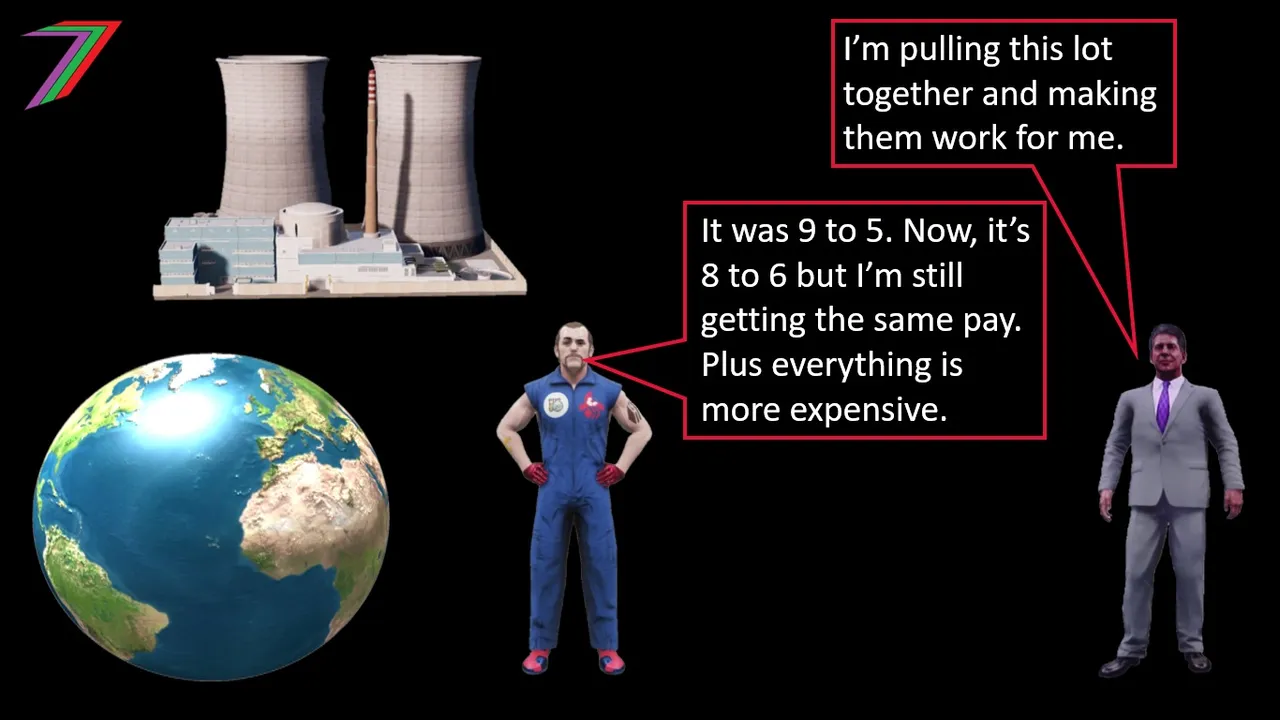
There are four factors of production (can be broken down further). These are labour, land, capital, and entrepreneurship. Labour is the human effort involved in production. Land is the natural environment used in production (e.g. land, water, and raw materials). Capital are goods used to aid in production (e.g. machinery, tools, buildings, and stocks of semi-finished goods). Entrepreneurship involves pulling all other factors of production together to create a product; it also involves bearing the risk for the products’ success. Production of goods and services usually requires the combination of these factors of production.
The goods and services are sold to obtain revenue. The revenue is distributed across the factors of production. For example, labour requires wages, land requires rent and fees, capital requires interest payments, and entrepreneurs earn whatever is left as profits. Typically, Governments take a share of the profits as tax.
Payments to labour, land, and capital are dependent on interactions of demand and supply within their own markets, which may not necessarily correlate with revenue earned from production. Whereas, payments to entrepreneurs (profits) are subject to revenue earned (assuming free-market operations). Therefore, entrepreneurs absorb most of the risk as their payments fluctuate and could even be negative.
Revenue depends on quantity sold and price. Typically, entrepreneurs aim to maximise profits (i.e. their payments). To do so, in theory, they aim to produce up until the cost of the last unit produced (marginal cost) is equal to the revenue of the last unit sold (marginal revenue). Revenue earned is affected by the extent of competition. For very competitive markets, revenue per firm is reduced as revenue is split across all competing firms. However, competition reduces price; therefore, overall quantity sold in the market increases. Figure 2 compares price and quantity of a market with low competition with a market with high competition.
Figure 2: Low Competition vs. High Competition
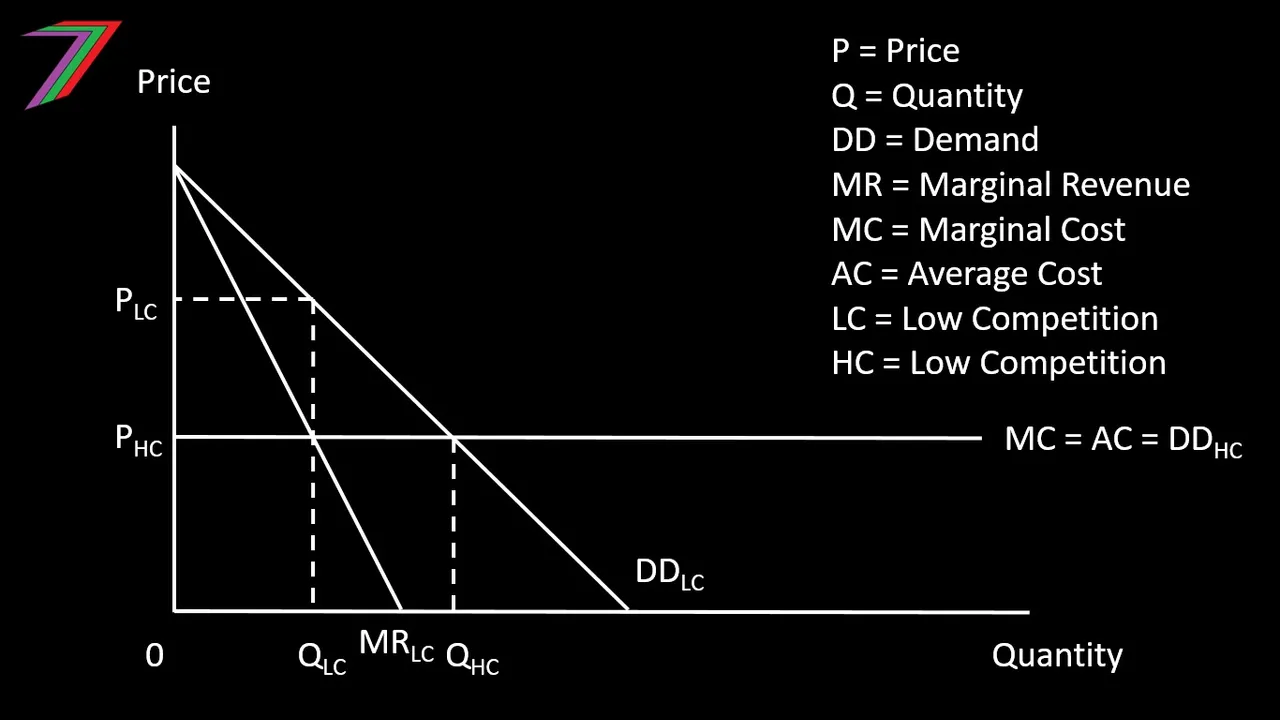
Competition is also likely to increase the overall revenue earned in the market. This occurs because equilibrium price and quantity are likely to be on a more elastic portion of the demand curve. Competitive markets will reduce the percentage of revenue taken as profits. Other factors of production will earn a higher percentage of revenue. Figure 3 compares the revenue split between markets with low competition and high competition.
Figure 3: Split of Revenue in Markets of different levels of Competition
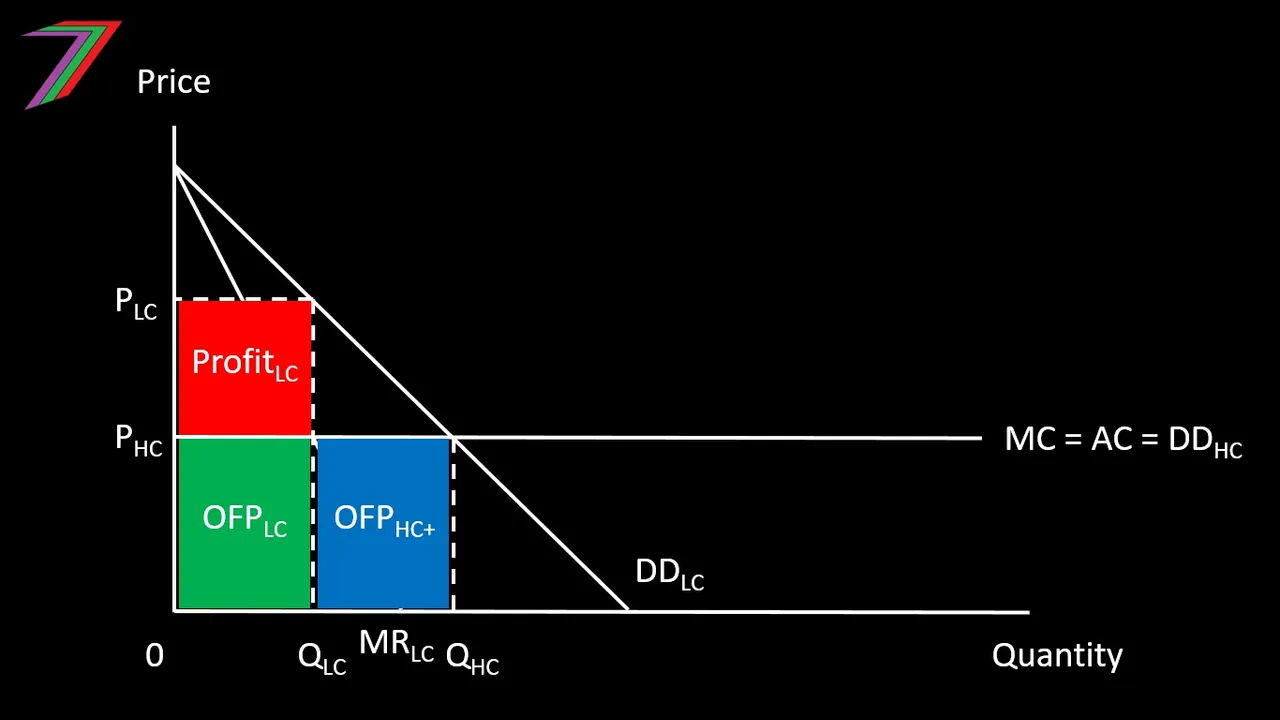
Note: In the above example, when competition is high (e.g. perfectly competitive), profits are reduced from the red section to zero and payments to other factors of production is increased by the blue section. The blue section should be larger than the red section. Even though, profit might be zero, in most cases, the entrepreneur of a small business also contributes to labour and is therefore assumed to be allocated a wage.
This increase in share of revenue for other factors of production occurs because there is a higher demand for them as they are required to produce the larger quantity. For example, if more labour is hired, more wages are paid. If the market is very large, wages per a worker may also increase because labour becomes relatively scarcer. Figure 4 contains an example of the demand for labour.
Figure 4: Increasing Demand for Labour
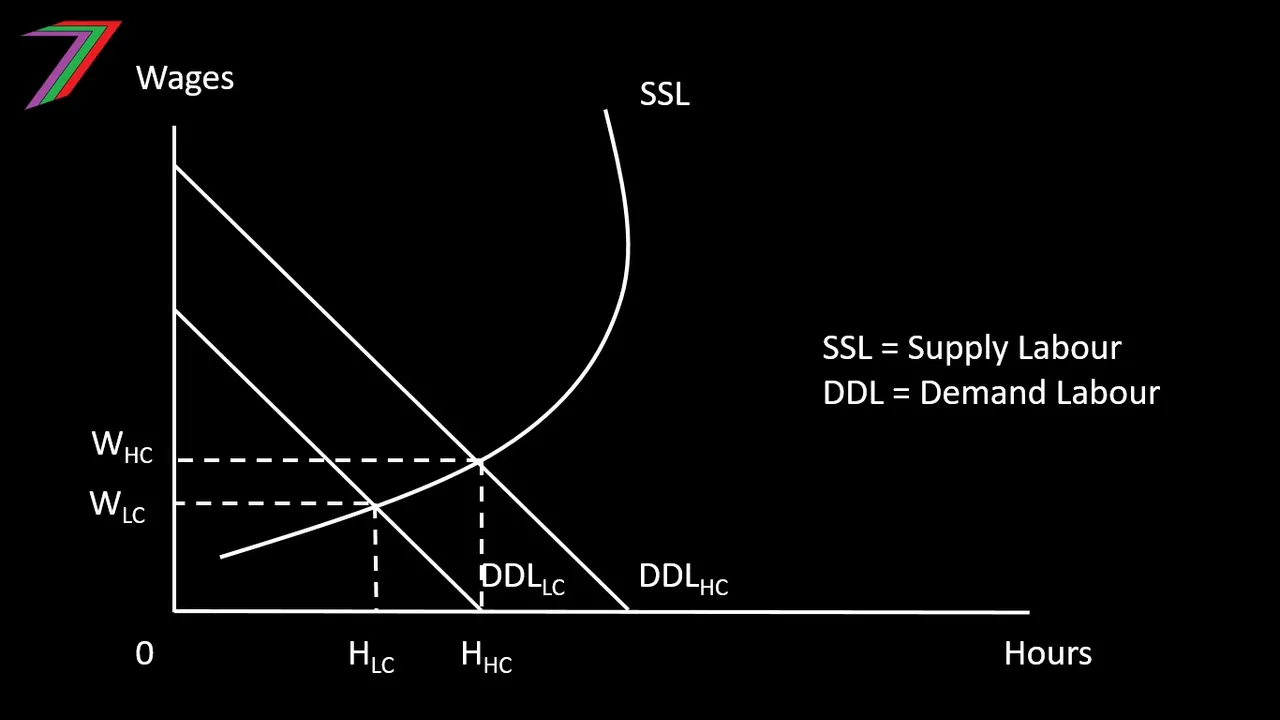
Eventually, the supply of labour tends to become backward bending (people realise they would rather allocate time to enjoying themselves than acquire more income than they would have time to spend). This leads to shortages of labour and high wages when production requirements become high. Therefore, a switch away from labour to capital tends to occur. This makes labour more efficient and less labour hours are required to produce a higher output.
Competition between businesses is essential to enabling a more accurate distribution of revenue to the factors of production that contributed to it. Competition also lowers the price of goods and services, which enables more people to acquire them in higher quantities. This is further aided by a larger allocation of revenue to wages because of higher outputs produced. Higher wages is likely to encourage investment in capital goods, which will encourage the growth and improvement in technology, which will lead to greater efficiency of all factors of production. However, perfectly competitive markets are not ideal, as incentives for entrepreneurship are eliminated. Instead, competitive markets should encourage product differentiation, which will enable entrepreneurs to earn a profit if their products can offer value that other businesses cannot fully replicate in the short-run.
Technology and Utility

Technology and utility are linked for both production and consumption. Technology can improve efficiency of production by enabling a person to contribute more to production in a shorter time. For example, compare manually screwing in screws with using an electric screwdriver. Technology can improve utility consumed by offering better products. For example, compare a smart phone, which can be taken to lots of different places and has features such as internet access with a landline phone, which is fixed and has no other features.
Technology can enable people to produce better products in a shorter time. This should result in higher revenue generated by higher output, higher prices from a superior product or both. Technology would be considered as a capital investment. Therefore, the increased revenue would be split between the more efficient labour force and the providers of the technology. Labour would have a claim to this revenue because of their investment in skills to enable them to use the technology efficiently.
As technology continues to improve, older technology and skills become at least partially redundant. New tools and machinery are acquired. Therefore, the workforce need to acquire new skills or update existing skills to operate the tools and machinery. In regards to updated products, people may choose to acquire new products that they believe will provide them with more utility. They are more inclined to do so if their existing products are not durable in the long-run. Hence, there is incentive for businesses to produce less durable products (this will also lower their costs if they do not need to acquire high quality materials).
Unpaid Producers of Utility

So far, we have discussed producing utility in the context of providing or contributing to the provision of goods and services that can be sold. However, people provide utility to other people and to themselves all the time. This occurs in families and communities.
- They support (physical or emotional) each other in times of need.
- They provide advice and wisdom.
- They are often first to help in an emergency.
- They provide company and companionship.
- They help to keep maintain, organise, and clean the home environment
- They offer each other social contact.
- They provide each other with entertainment.
- They contribute to enabling each other to become more compassionate and empathetic.
Different people contribute differently to adding utility to the family and community. People who spend less time working to provide paid utility have more time to offer utility directly to the family and community. For example, a retiree can help look after children and impart knowledge on the younger generations. For example, a disabled person can offer a different perspective on life and can enable others to view the world differently, which could contribute to making the world a friendlier and more caring place for everyone to live in.
Unpaid producers of utility may not be paid in terms of wages, income or profit but instead are supported by the families and communities where they make their contributions. The people who have benefited from the utility provided by the unpaid producers voluntarily support them financially in return.
Improved Scenario

It is not always possible for a person to consume the same value of utility as he or she has produced. I also believe that in many cases it is also not desirable. Everyone is different. We place different value on different things and activities. We have different capabilities and aptitudes, which affects our ability to produce utility for other people. Therefore, a better ideal scenario would be that everyone is given the opportunity to acquire a sufficient level of utility to achieve a reasonable quality of life. Opportunities can be offered in terms of access to education. This can be formal education, education imparted by family and community, or education from opportunities to gain experience. Not everyone is able to contribute in a manner that can earn an income or wage. However, everyone is capable in some way of adding value to the family and community where they belong. Families and communities respond by supporting the members who do not earn an income from their contributions.
More posts

If you want to read any of my other posts, you can click on the links below. These links will lead you to posts containing my collection of works. These 'Collection of Works' posts have been updated to contain links to the Hive versions of my posts.
My CBA Udemy Course
The course contains over 10 hours of video, over 60 downloadable resources, over 40 multiple-choice questions, 2 sample case studies, 1 practice CBA, life time access and a certificate on completion. The course is priced at the Tier 1 price of £20. I believe it is frequently available at half-price.
Future of Social Media






